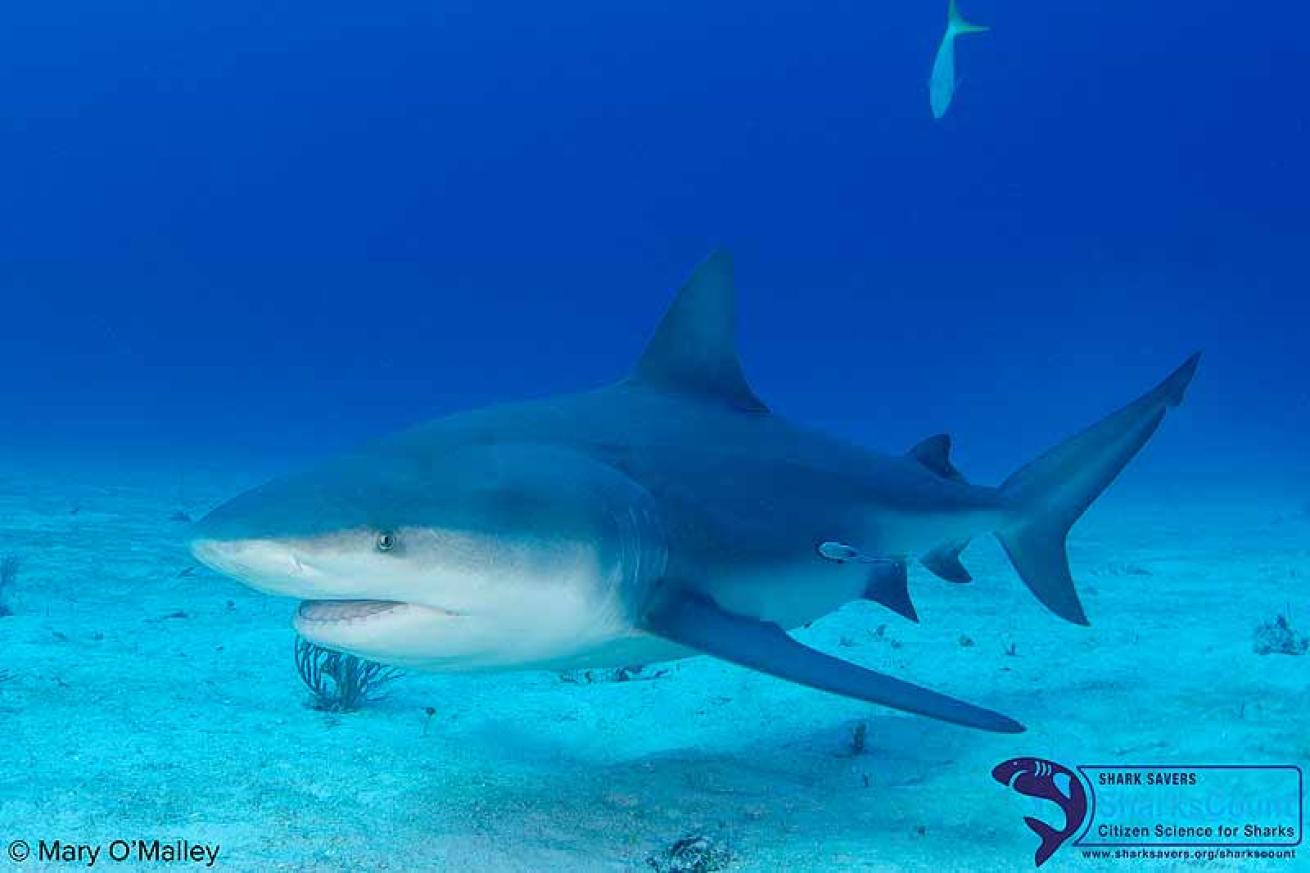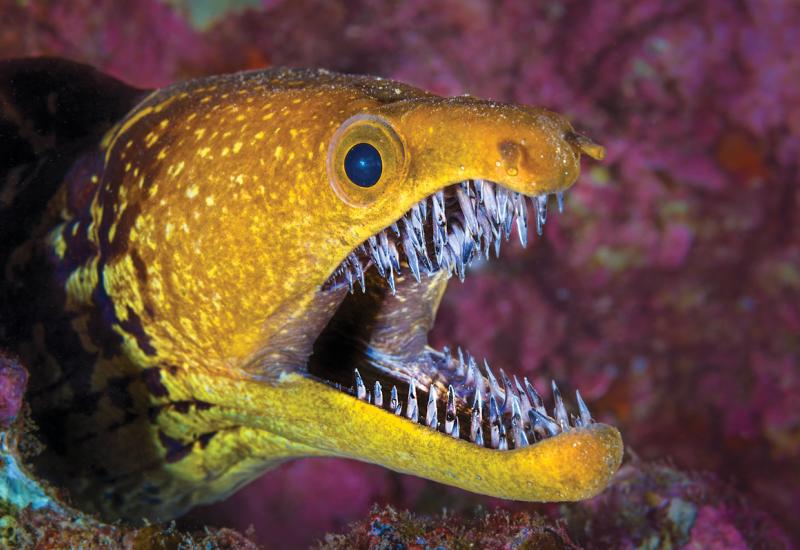Divers Guide to Marine Life: Bull Shark (Carcharhinus Leucas)

Bull shark (Carcharhinus leucas)
A rare bull shark fetus with dicephalia, having two heads, was identified from the Gulf of Mexico in 2013.
Click HERE for more fun shark facts!
Mary O'Malley
Bull shark (Carcharhinus leucas)
•Conservation status: IUCN Red Listed as ‘Near Threatened’
•Common names include Zambezi shark, Swan River shark, and Lake Nicaragua shark.
•Bull sharks usually have a thick girth and can reach 3.4 meters (~ 11 ft.) in length; and reports suggest that Fiji’s bull sharks are larger than those of other populations.
•Bull sharks have a worldwide distribution. They are the only sharks that can move between salt water and fresh, including estuaries and rives like the Amazon, Gambia, Ganges, Mississippi, San Juan (Lake Nicaragua), Tigris and Zambezi, to give birth to young and use freshwater habitats as nurseries.
•Bull shark litter size is one to 13 pups, and in warmer regions they may have year-round rather than seasonal nurseries. They can live up to between 12 and 16 years old. The popular idea that this species has abnormally higher levels of testosterone, compared to other animals, is likely untrue.
•They have a very diverse diet, including other sharks and rays, bony fish, turtles, and occasionally the catch of spear fishermen.
•More than most species of shark, they are susceptible to coastal pollution because, increasingly, their habitats include polluted fresh water systems.
•Their fins are considered high quality by the fin trade and are one of the fourteen species most frequently found in the Hong Kong markets.
•A rare bull shark fetus with dicephalia, having two heads, was identified from the Gulf of Mexico in 2013.
•Bull shark dives are popular in Florida, Mexico, South Africa and Fiji.
Information provided by the SharksCount program. Find out more about citizen science for sharks at www.sharksavers.org/sharkscount.
Click HERE to see the full list of sharks.

Mary O'MalleyA rare bull shark fetus with dicephalia, having two heads, was identified from the Gulf of Mexico in 2013.
Click HERE for more fun shark facts!
Bull shark (Carcharhinus leucas)
•Conservation status: IUCN Red Listed as ‘Near Threatened’
•Common names include Zambezi shark, Swan River shark, and Lake Nicaragua shark.
•Bull sharks usually have a thick girth and can reach 3.4 meters (~ 11 ft.) in length; and reports suggest that Fiji’s bull sharks are larger than those of other populations.
•Bull sharks have a worldwide distribution. They are the only sharks that can move between salt water and fresh, including estuaries and rives like the Amazon, Gambia, Ganges, Mississippi, San Juan (Lake Nicaragua), Tigris and Zambezi, to give birth to young and use freshwater habitats as nurseries.
•Bull shark litter size is one to 13 pups, and in warmer regions they may have year-round rather than seasonal nurseries. They can live up to between 12 and 16 years old. The popular idea that this species has abnormally higher levels of testosterone, compared to other animals, is likely untrue.
•They have a very diverse diet, including other sharks and rays, bony fish, turtles, and occasionally the catch of spear fishermen.
•More than most species of shark, they are susceptible to coastal pollution because, increasingly, their habitats include polluted fresh water systems.
•Their fins are considered high quality by the fin trade and are one of the fourteen species most frequently found in the Hong Kong markets.
•A rare bull shark fetus with dicephalia, having two heads, was identified from the Gulf of Mexico in 2013.
•Bull shark dives are popular in Florida, Mexico, South Africa and Fiji.
Information provided by the SharksCount program. Find out more about citizen science for sharks at www.sharksavers.org/sharkscount.
Click HERE to see the full list of sharks.










